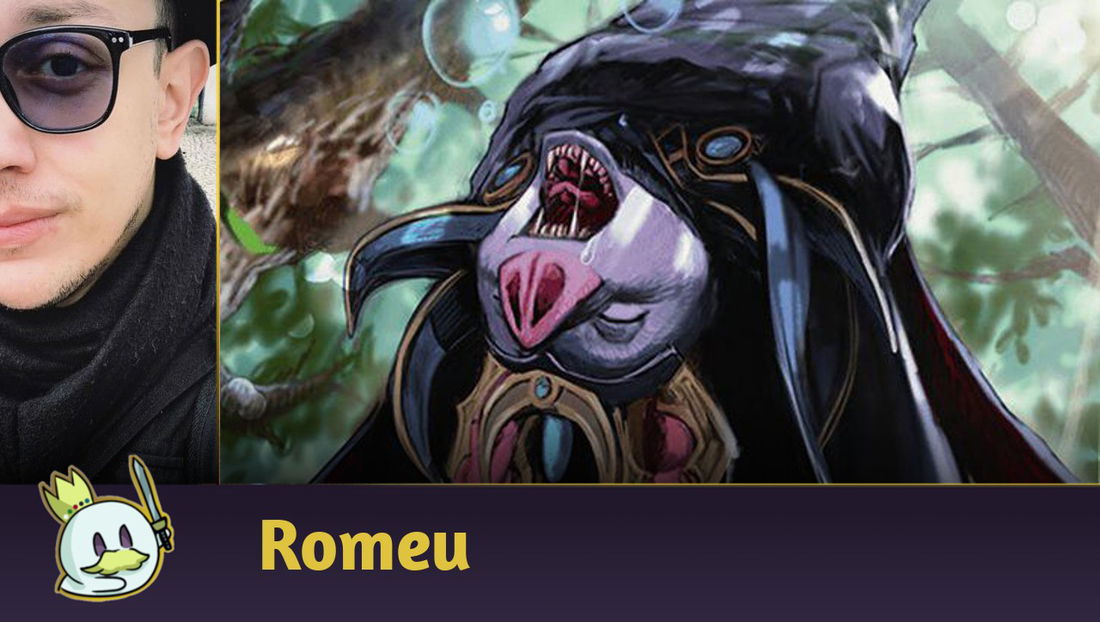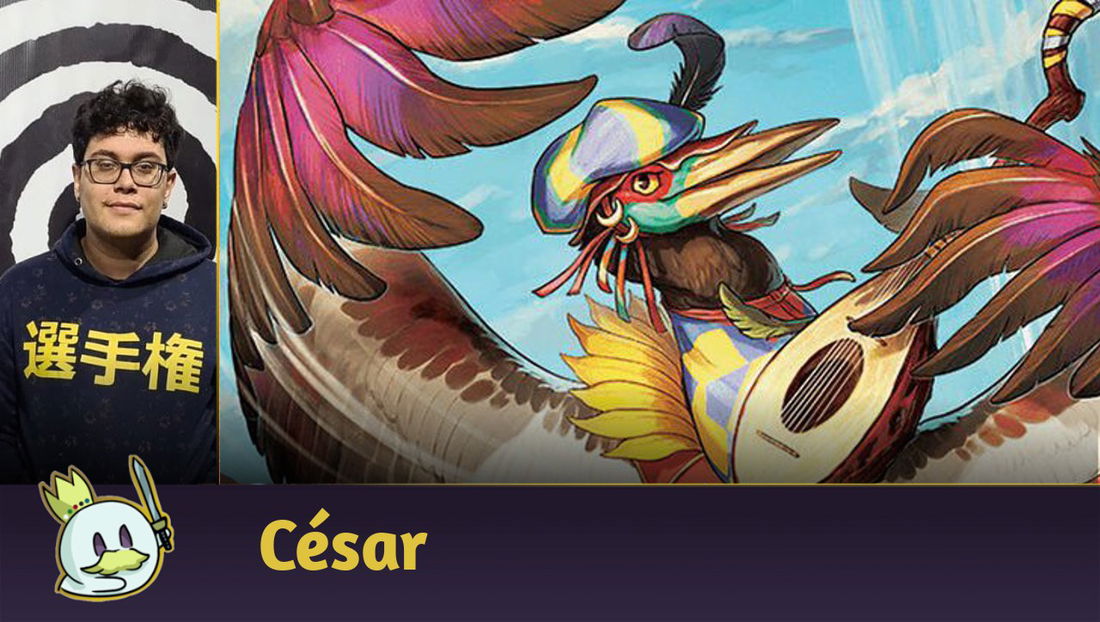Introduction
Greetings, Legacy players! As Bloomburrow hasn't been out for long, it's still difficult to say how it impacted our format. However, what we can say is that a deck that went through a couple of transformations and got a lot from Modern Horizons 3
has started climbing to the top. With the inevitable Grief ban on the horizon, and the waves this should have on the metagame, we might see a lot more space in the meta for newer decks in the upcoming weeks.
Let's discuss Cradle Control!

Deckbuilding
I've discussed this archetype a couple of times in the past when I analyzed the meta. Just like a Pokémon, it is nothing more, nothing less than the evolution of one of the most traditional Legacy decks: Elves!
For years, the Elves deck, with Glimpse of Nature, Gaea's Cradle, and Natural Order, was a great deck in the format and was beloved by many, many players. However, all that changed when the Orcish Bowmasters attacked.

Orcs (quite ironically for any Lord of the Rings fan) won their war against the Elves because they attacked on two fronts: they punished their card draw and eliminated, efficiently, any creatures without much toughness. And thus one of the most popular decks in the format was unarguably pushed out of the spotlight.

However, Gaea's Cradle and Natural Order are still extremely broken, and, if the deck couldn't carry on as it was, then we needed to change it and keep taking advantage of these two cards. The list we'll analyze in this article was piloted by FunkiMunki, who won a Magic Online Challenge recently.
As you can see, it no longer plays its previous Elf core: goodbye Glimpse of Nature, Wirewood Symbiote, Quirion Ranger, Heritage Druid, Nettle Sentinel, Elvish Visionary, and Allosaurus Shepherd. Only the Cradle/Order duo and Green Sun's Zenith have remained, and keep the rest of the deck united.
Before MH3, Fiend Artisan and Elvish Reclaimer were added to this shell. They'll tutor several answers for you and invariably create boards in which either Craterhoof Behemoth or Atraxa, Grand Unifier (both of which you can find through either Natural Order or Green Sun's Zenith) win you the game. This package of cards was a valid competitor for this format, but hardly ever made it to the top tiers. Enters Modern Horizons 3.

The greatest addition from this set was Wight of the Reliquary, which I reviewed during spoiler season at the time. It replaced Fiend Artisan more efficiently, as it keeps pressuring the board and searches lands for you at the same time, thanks to its Vigilance. To quench its thirst for sacrifice, this deck also includes 8 mana dorks (1-mana creatures that create mana for you when you tap them), besides 2 Dryad Arbor.
Apart from the deck's namesake, Gaea's Cradle, you'll also spot the newest Talon Gates of Madara. This new land replaced Sejiri Steppe as a tutorable protection, and has another advantage: it doesn't delay your game plan whenever you need to play it tapped. It also saves something from a global removal, which Steppe doesn't do.

Finally, the third card from MH3 to make it into this deck is Springheart Nantuko. This seemingly innocent Monk creates a mighty hoard of Insects from thin air through fetch lands and Wight of the Reliquary. These, in turn, make Gaea's Cradle and/or Craterhoof Behemoth even more busted. Eventually, you'll even have enough mana to copy the creature you enchanted, and create even more value.
The rest of the deck includes the aforementioned Elvish Reclaimer, which gives more redundancy to the Wight of the Reliquary game plan. Then, there's Endurance, the Incarnation, which is incredibly strong in a format with many graveyard interactions, and is efficient against cards like Dragon's Rage Channeler and Delver of Secrets thanks to its body. Once Upon a Time will give you more consistency and Grist, the Hunger Tide is an excellent removal you can find through Green Sun's Zenith.
Other cards you'll often find in this archetype are Collector Ouphe in the main deck instead of the sideboard, Fiend Artisan, Quirion Ranger, Sylvan Safekeeper, and Boseiju, Who Endures.
Mulligan
Before your mulligan, you need to consider the fact that this deck lets you manipulate your cards with Once Upon a Time, Green Sun's Zenith and the Wight of the Reliquary and Elvish Reclaimer land searcher duo. So, you can typically keep a good variation of hands that don't have any specific plan, but eventually build one as the game goes on.
As you can get Lair of the Hydra with Wight/Reclaimer, eventually you can use the extra mana you get from Gaea's Cradle to activate it and set up a powerful attack.
Starting hands:

This hand is weak against combo decks, but this deck, at least in game 1, is generally weak against combo decks anyway. If you see yourself in an attrition war, for instance, against blue tempo decks, this is a very reasonable hand. You have access to Once Upon a Time without paying for its mana cost and Elvish Reclaimer on turn 1, so you're set to either create value through its ability on turn 2 or enchant it with Springheart Nantuko. Verdict: it's an ok keep in a vacuum, but risky against combo decks.

This hand looks cool, as it can put either Reclaimer or Zenith in play on turn 1, but, in practice, it already is a mulligan to 6 because of that Behemoth, which you want in your deck, not your hand. Even though it has many cards you can play on turn 1, it is quite vulnerable against Wasteland or Blood Moon. If you're playing first, you can consider it, depending on your opponent, but not if you're drawing first. Verdict: Mulligan - you can consider it if you're playing first, depending on your opponent.

Too much mana, not enough action. Once Upon a Time on turn 1 may convince you to misjudge the situation and keep this hand, but you can find something better with 6 cards. Verdict: Mulligan.

This is a risky hand, and, in practice, it semms you'll have to mulligan it because of the Behemoth. However, the rest of the cards in it are everything you need and want: mana acceleration on turn 1, Wight on turn 2, and the threat of a Natural Order as early as turn 3. Even the Behemoth isn't that illogical, considering that, with the tokens you create with Springheart Nantuko, you can fuel Gaea's Cradle, which, in turn, you can easily find with Wight. Verdict: keep, but be careful with it.
Building the Sideboard
This deck was built for a format full of blue decks that push combo decks out of the spotlight, so there's nothing in it to answer them in game 1 except for an occasional Endurance. To make up for it, its sideboard includes a complete Thoughtseize kit.
Snuff Out, Dismember, and Fatal Push are your answers against the several creature decks around, particularly Eldrazi Aggro, which has grown significantly since we last discussed the format. Finally, we have Faerie Macabre to complement your Endurances as graveyard answers, and Collector Ouphe and Force of Vigor to deal with artifact decks. Force of Vigor, in particular, deals with problematic enchantments, like Blood Moon, as well.
Other sideboard options you can consider are: Gaddock Teeg, Maze of Ith, Opposition Agent, Pick Your Poison, Toxicrene, Vexing Bauble, and Wasteland.
Sideboard
Scaminator
All 4 Endurances in your main deck will be great in this match, but your opponent can still put pressure on you with Psychic Frog. Your mana dorks are vulnerable to Orcish Bowmasters, so don't rely too much on them.
Post-side, you'll get to increase your resilience against reanimates and add more answers for their Frog.
In:

Out:

Grixis / Dimir Delver
This opponent is precisely what you want to face in this format, as your deck is built to win attrition wars and creates enough mana to make Wasteland a non-issue. Psychic Frog is still a threat, and you'll need to add a few removals after game 1 to deal with it.
In:

Out:

Red Stompy
Blood Moon can be an issue for you, particularly if they start playing first, and you don't have enough time to get your basic Forest.
If you're playing first, it is a bit easier, but, even if you do put a Hierarch in play early on, don't let your guard down: Fury can destroy your entire board effortlessly. This is definitely not an easy match.
Post-side, Collector Ouphe and Force of Vigor are great, and Snuff Out is an answer against Broadside Bombardiers, even if all your lands are tapped. The idea is to put Atraxa, Grand Unifier in play as fast as possible, as your opponent doesn't have many answers for her.
In:

Out:

Eldrazi Aggro
They are very explosive as Thought-Knot Seer is a pressure machine and the damage from Fleshraker adds up real fast. The sooner Atraxa, Grand Unifier is in play, the better.
Post-side, you should add more creature removal.
In:

Out:

Mystic Forge Combo
This deck has become more popular recently, so you should prepare yourself. Game 1 is a race and you'll start already a bit behind, as your best shot at winning is Craterhoof Behemoth and they have The One Ring, which simply deals with that.
Post-side, however, Collector Ouphe is all their nightmares are made of. Force of Vigor is also strong, but they can stop you from casting it with its alternative cost with Vexing Bauble.
In:

Out:

Final Words
Presently, an archetype that started out as an aggro combo deck in Legacy has transformed into one of the main control decks around. I can't say I'm surprised: when I saw Wight of the Reliquary for the first time, I knew it would find a place in this format, as it was very similar to Knight of the Reliquary, a Legacy staple.
The upcoming Grief ban might become a problem for this deck, but, considering it could make things better for combo decks, this list will have to adapt to it. Nonetheless, I believe this archetype could, potentially, prevail, even if the format turns into complete chaos after the next ban announcements.
What about you? Did you like this deck? What would you change in it? Tell us your thoughts in our comment section below!
Thank you for reading, and see you next time!















— Kommentare 0
, Reaktionen 1
Sei der erste der kommentiert